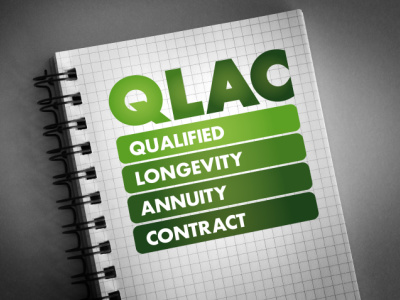Qualified Longevity Annuity Contracts Under the SECURE 2.0 Act
 Retirement planning is a crucial aspect of ensuring that a person and family will have a secure financial future. There are numerous methods that may be used to save money for retirement and ensure that it will be invested correctly and grow in value. At the same time, it is important to address tax-related issues related to retirement accounts and the distributions that will be received after retirement.
Retirement planning is a crucial aspect of ensuring that a person and family will have a secure financial future. There are numerous methods that may be used to save money for retirement and ensure that it will be invested correctly and grow in value. At the same time, it is important to address tax-related issues related to retirement accounts and the distributions that will be received after retirement.
One option that has gained popularity in recent years is the use of Qualified Longevity Annuity Contracts (QLACs). With the passing of the SECURE 2.0 Act, QLACs have become an even more attractive tool for retirement planning. To ensure that these and other tools can be used correctly while minimizing taxes, you may want to consider working with an experienced tax law attorney.
What Are Qualified Longevity Annuity Contracts?
A Qualified Longevity Annuity Contract is a type of annuity that provides guaranteed income during retirement. It is designed to address one of the biggest concerns retirees face—outliving their savings. By purchasing a QLAC, a person can create a stream of income that will last throughout their lifetime.
One key feature of a QLAC is its ability to reduce required minimum distributions (RMDs) from Individual Retirement Accounts (IRAs) and other qualified retirement plans until age 85. RMDs are typically required once a person reaches the age of 70 ½. With a QLAC, a certain amount of the funds saved can be excluded when calculating RMDs. For those who plan to continue working when they are over the age of 70, a QLAC can reduce the amount that they will be required to take out of their retirement savings.
How Has the SECURE 2.0 Act Affected QLACs?
There is a limit on how much a person can invest in a QLAC using funds from their IRA or other qualified plan accounts. Previously, the maximum amount was set at $125,000 or 25% of a person’s total account balance, whichever was less. Under the SECURE 2.0 Act, this amount has been increased to $200,000, with no limit on the percentage of total savings.
By using a QLAC, a person can reduce their RMD and potentially lower their taxable income during retirement. Funds transferred into a QLAC are not included in the calculation of RMDs until distributions begin at age 85. By reducing the amount subject to RMDs, a person may be able to keep more money invested for longer periods of time, potentially allowing it to grow and provide additional income in later years.
The SECURE 2.0 Act also allows distributions from QLACs to be included in RMDs. That is, the amount received from a QLAC and the amount received from an IRA may be combined and counted toward the required minimum amount that a person must take out of their retirement savings each year. This can ensure that more money can remain invested, providing a person with the necessary financial resources later in life.
Contact Our San Jose Tax Planning Lawyer
If you are interested in learning more about how a Qualified Longevity Annuity Contract may benefit your retirement plan, or if you have questions regarding other aspects of tax planning, John D. Teter Law Offices can provide you with invaluable guidance. Our experienced San Jose, CA tax attorney can discuss your specific needs and advise you on the best ways to protect your financial interests as you plan for the future. To schedule a consultation, please contact us at 408-866-1810.









